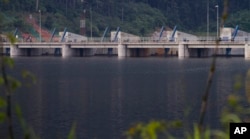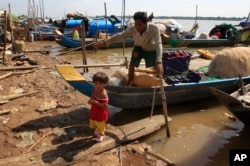A panel of water experts have warned that the World Bank's promotion of a major dam in Laos, which they say failed to deliver on basic promises, has fueled the country's development of shoddy hydropower projects with catastrophic consequences.
In July, an auxiliary dam at the Xe Pian Xe Namnoy hydropower complex in southern Laos burst, displacing thousands and officially killing at least 40 people, though many believe the real toll to be much higher.
The Laos government has conceded shoddy construction played a role in the collapse — a failing, a panelist at the Foreign Correspondents Club of Thailand on Thursday said, stemmed from corruption and mismanagement across the entire hydro-power sector in Laos.
Bruce Shoemaker, who began surveys to assess impacts of the Nam Theun 2 (NT2) dam before construction began some 13 years ago, said the World Bank had created a sustainable hydro-power myth through its promotion and financing of the project.
"And that fueled this whole kind of industry revival and really fueled the private sector rush in Laos for hydropower," he said.
The $1.3-billion dam, which also received funding from the Asian Development Bank and commenced operation in 2010, exports 90 percent of its power to Thailand.
Though an international panel of experts employed to monitor NT2 had consistently reported serious flaws in measures designed to funnel those profits back into poverty alleviation and conservation, the bank had continued to promote it as a hydro-power project that was done properly, Shoemaker said.
For instance, he said, in a conservation zone financed by the dam and endorsed by the Wildlife Conservation Fund, a massive trade in the illegal logging of luxury rosewood emerged that saw paths cut for patrol teams expanded into roads for extraction.
"The leading member of the panel of experts actually by 2014 after having been a big supporter of it called Nam Theun 2 his final disappointment' and said it had all been a bad mistake," said Shoemaker.
Some 6,000 indigenous villages were forced into resettlement while more than 100,000 people downstream suffered dramatic decreases in wild fish catches and other problems such as increased flooding, he added.
Laos government officials have not responded to VOA inquires for this story while World Bank staff overseeing the Nam Theun 2 project said they could not reply on short notice.
In July, a panel of experts called for the closure of NT2's resettlement period.
They concluded that necessary conditions for closure had been met though in their previous report they had found "that it cannot be confidently said that the conditions for overall sustainability of livelihoods have been achieved" — findings their stakeholders had not been pleased with.
Shoemaker is co-editor of the recently published book Dead in the Water: Global Lessons from the World Bank's Model Hydropower Project in Laos.
He questioned why, after going cold on hydro-power in the 1990's amid a flurry of criticism and opposition to projects, the World Bank began promoting the technology as sustainable in the 2000s with the 2005 Nam Theun 2 as something of a centerpiece.
Shoemaker was joined by community advocacy groups and water resource watchdogs.
Niwat Roykaew, head of northern Thai people's network Rak Chian Khong Group and a plaintiff in two lawsuits against upstream dams, said he has watched the Mekong undergo drastic changes that have seriously damaged food security.
"I think if it continue like this without stopping these activities there will be no more river soon, it's not sustainable," he said.
About 140 dams are planned to be built in the Lower Mekong basin, including two on the mainstream of the river in Laos that are under construction and two in advanced preparation or planning.
After the Xe Pian Xe Namnoy collapse made headlines around the world, Laos announced all new proposed dams would be halted pending a review of all existing hydropower facilities.
Yet the day after this announcement, it initiated the prior consultation process on a new, highly controversial Mekong mainstream project — the Pak Lay dam.
This came despite the fact that major question marks had been raised over the viability of its large hydro-power ambitions when Thailand delayed signing a power purchase agreement on another Mekong mainstream dam — the Pak Beng — earlier this year.
Premrudee Daorung, coordinator of the Lao Dam Investment Monitor, which was established in the wake of the Xe Pian Xe Namnoy collapse, said if Laos continued with its dam business as usual, people should be prepared for disastrous impacts.
"The question is if the Laos government is not ... learning from Xe Pian Xe Namnoy what to do with their direction to develop large scale hydro power dams, when will they learn?" she asked.












